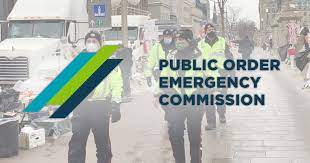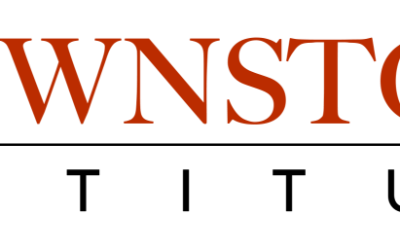Justice Paul Rouleau released his Report on February 17, and “concluded that the very high level threshold required for the invocation of the (Emergencies) Act was met.” He insists “cabinet had reasonable grounds to believe there existed a national emergency arising from threats to the security of Canada,” leading to the Prime Minister invoking the Emergencies Act. Nonetheless, Rouleau conceded “I do not come to this conclusion easily as I do not consider the factual basis for it to be overwhelming.”
For any Canadian following the hearings, this is, to say the least, an understatement.
During the Public Order Emergency Commission, RCMP, CSIS, Ontario Provincial Police, and Ottawa Police Service testified that the protesters did not constitute a threat to national security. The tests for declaring an emergency as set out in the Emergencies Act were not met. These are espionage, sabotage, foreign interference, acts of serious violence, and plotting to overthrow the government.
The former President of the Canada Border Security Agency, John Ossowski, testified that on the morning of February 14, 2022 all the border points across Canada were at their lowest threat level.
Rouleau lamented in his Report that “Lawful protest descended into lawlessness, culminating in a national emergency.” (p. 248) Yet, Ontario judge Hugh McLean ruled on February 7, and again on February 16, 2022, that the protests in Ottawa were legal.
The testimony of police, RCMP, CSIS, and Attorney General David Lametti, all confirmed none of the legal triggers were met to declare the protests an unlawful assembly. Police testimony, and internal memos presented at the inquiry, revealed the protests were deemed lawful. The Riot Act wasn’t read under the Criminal Code to declare the protest had devolved into lawlessness. The OPP, OPS and RCMP repeatedly took the stand describing, as OPP Supt. Patrick Morris summarized, the “lack of criminality.”
Rouleau took issue with Supt. Morris’ intelligence assessment describing “the absence of credible threats that protesters intended to engage in violence or other unlawful activity, and…there being no instances of serious violence despite the size and length of the protests.” Rouleau declared in his Report, “I disagree with his (Morris) assessment and accept the evidence from several witnesses that there was violence.” Though the testimony of Ottawa residents spoke of “felt” violence but experienced no actual physical violence. No looting. No bombing. No smashed windows.
Elsewhere Rouleau notes that “Sound intelligence enables the government to cope with a crisis using methods appropriate to the real, rather than the imagined, dimensions of the threat.” (p. 171). What is Rouleau’s apprehension of the work that goes into gathering on-the-ground police assessments and preparing an Intelligence Report for the OPP? His impulse to wave away police testimony that there was no credible serious violence is disturbing. The media would have been more than happy to profile any protester who actually committed an act of violence. Yet, they had to settle for stories about Tamara Lich, whose charge was one of mischief.
And the most serious charges of weapons possession in Coutts, Alberta, resulted in arrests by the RCMP using existing laws of the land.
What Rouleau found compelling was veteran Jeremy MacKenzie’s Diagolon; a symbol representing his cocaine addicted, time traveling, plastic goat figurine. Rouleau rejected McKenzie’s assertion that this was a “joke.” In fact, Rouleau wrote “The Royal Canadian Mounted Police (RCMP) has described Diagolon as a militia-like network with members who are armed and prepared for violence.”
But is this the sound intelligence that enables the government to cope with a crisis? Or is this the product of the RCMP conjuring imagined threats?
On January 28, 2023, Coutts, Alberta, resident Joanne Person announced she may have evidence suggesting RCMP planted weapons in her home last February, based on a cell phone recording she alleges substantiates her claims. She made these newsworthy statements after her weapons and mischief charges were dropped on January 16, 2023.
Rouleau justified the use of the Emergencies Act because the government failed in its duties at all levels. Government incompetence is now the threshold to suspending Canadian civil liberties. This is a low bar for declaring a state of emergency. Rouleau has punctuated for many who were following the Commission and the events of the past year, that our nation is drifting away from its democratic foundations.
Rouleau conceded “there is significant strength to the arguments against reaching” the threshold to invoke the Emergencies Act. Given testimony presented, the Government failed to use existing laws to address the protest. Invoking the Act was not, as the Prime Minister insists, a last resort.
Ray McGinnis is a writer, and author of Unanswered Questions and Writing the Sacred. Earlier in his career, Ray was a program staff in education for the United Church of Canada, serving in several congregations, as well as at the denominations national office (1986-95). He attended the Commission hearings in mid-November, and lives in Vancouver.



